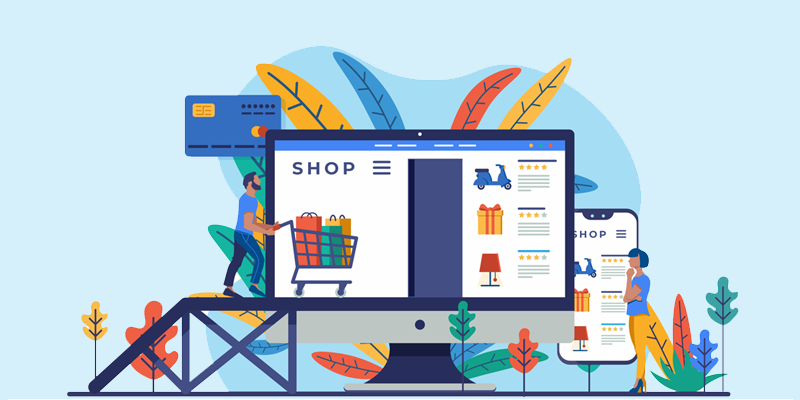Designing Headless eCommerce Platforms: Pros, Cons & Implementation Tips
What Is Headless eCommerce?
In a headless eCommerce architecture, the “head” (front-end) is separated from the “body” (back-end commerce engine). Instead of a tightly coupled storefront template, you expose commerce capabilities, product catalogs, carts, and customer profiles via RESTful or GraphQL APIs. Developers can then build any front-end: websites, mobile apps, kiosks, voice assistants, even IoT devices, all consuming the same underlying commerce services.
This API-driven approach contrasts with monolithic platforms (Magento, Shopify Classic, etc.) where the front-end theme, back-end logic, and database live in one codebase. Going headless means:
- Freedom of Presentation: Choose any JavaScript framework (React, Vue.js, Angular) or native SDK.
- Channel Expansion: Launch new touchpoints, progressive web apps, or in-store tablets, without rewriting back-end logic.
- Faster Iteration: Front-end and back-end teams work in parallel, speeding up development cycles.
Pros of Headless Commerce
1. Ultimate Flexibility & Customization
You’re not confined to predefined theming engines. Need a micro-interaction on your PDP (Product Detail Page)? Build it in React and plug into your headless APIs. Want to A/B test cart flows? Swap front-end components without touching checkout logic.2. Faster Time-to-Market for New Channels
With APIs in place, rolling out a mobile app or voice-assistant ordering takes weeks rather than months. All channels share the same commerce core, ensuring consistency in pricing, inventory, and promotions.3. Improved Performance & SEO
A decoupled front-end can be pre-rendered (Static Site Generation) or server-side rendered, delivering sub-2s page loads. Faster pages improve user experience and search rankings, a win-win for conversion rates.4. Scalability & Resilience
Scale front-end and back-end independently. If your promotional landing page sees a sudden traffic spike, you can add front-end servers without overprovisioning the commerce engine.5. Empowered Marketing Teams
Marketing can use headless CMS or page-builder tools (like Contentful or Sanity) to craft landing pages, personalization banners, and product carousels, all without developer intervention.Cons & Challenges of Headless Commerce
1. Higher Initial Complexity
Decoupling introduces more moving parts, API gateways, caching layers, and security proxies. You’ll need experienced architects to design a robust microservices or serverless back-end.2. Increased Development Overhead
Unlike plug-and-play themes, headless requires custom front-end development. Your team must be comfortable with modern JavaScript frameworks and DevOps pipelines.3. Maintenance of Multiple Codebases
Running separate repositories for front-end and back-end can complicate versioning, testing, and deployments. Strong CI/CD practices and thorough documentation become essential.4. API Management & Governance
Too many APIs without proper governance can lead to “spaghetti” integrations. You need rate limiting, versioning strategies, and clear API documentation to avoid chaos.5. Cost Considerations
Headless setups often require more infrastructure (CDNs, serverless functions, container orchestration). Weigh these costs against the performance and flexibility gains.Key Considerations Before You Go Headless
- Business Goals & Use Cases
- Are you launching multiple channels?
- Do you need extensive personalization?
- Will marketing need autonomy over front-end content?
- Team Capabilities
- Does your team have React/Vue expertise?
- Can your DevOps group handle Kubernetes or serverless deployments?
- Do you have API design and governance experience?
- Platform & Tech Stack
- Choose a commerce engine with mature headless APIs (e.g., Commerce.js, Shopify Plus, BigCommerce, or custom microservices).
- Select a headless CMS for marketing content.
- Decide on front-end framework and hosting (Netlify, Vercel, AWS Amplify).
- Data & Security
- Plan for GDPR/CCPA compliance at the API layer.
- Use OAuth2 or JWT for secure, token-based authentication.
- Implement API rate limits and WAF (Web Application Firewall) protections.
Implementation Tips for Headless eCommerce Success
1. Start with an API-First Commerce Core
Ensure your commerce engine exposes all functionality, catalog, cart, customer, and promotions via well-documented REST or GraphQL endpoints. If using a SaaS platform (like BigCommerce), verify that its GraphQL Storefront API supports your use cases.2. Adopt a Modular Front-end Architecture
Break your front-end into reusable components: ProductCard, CartSidebar, CheckoutForm. Use a monorepo (Nx, TurboRepo) or micro-frontends for large teams to maintain clear ownership.3. Leverage Static Site Generation (SSG) & Incremental Builds
Tools like Next.js or Nuxt.js let you pre-render product pages at build time, while handling inventory-driven pages via on-demand revalidation. This hybrid approach balances speed and freshness.4. Implement Robust Caching & CDN Strategies
Cache API responses at the edge using CDN functions. For time-sensitive data (cart, user profile), employ short-TTL caches or client-side hydration to blend performance with accuracy.5. Version Your APIs & Plan Deprecations
Use URL versioning (/v1/products → /v2/products) or header-based versioning. Communicate deprecation timelines clearly to front-end teams to avoid sudden breakages.6. Build a Comprehensive CI/CD Pipeline
Automate unit/integration tests for both front-end and back-end. Deploy front-end separately from back-end, but use staging environments that mirror production for end-to-end testing.7. Monitor Performance & Errors End-to-End
Use APM tools (New Relic, Datadog) to track API latency and front-end render times. Implement real-user monitoring (RUM) to catch client-side issues before they affect conversions.8. Empower Marketing with Headless CMS
Integrate a headless CMS (Contentful, Strapi) to allow marketing to update banners, blog posts, and landing pages via APIs, without code deployments.Conclusion
Designing headless eCommerce platforms unlocks agility, performance, and channel expansion, key differentiators in today’s hyper-competitive market. While the initial investment in architecture, development, and DevOps can be higher than traditional monoliths, the long-term rewards, faster time-to-market, superior user experiences, and clear separation of duties more than justify the effort.
Ready to embark on a headless commerce journey? Quicksoftec’s eCommerce experts specialize in crafting scalable, API-first architectures and dynamic front-ends. Contact us for a free consultation, and let’s design your next-generation headless platform together.

